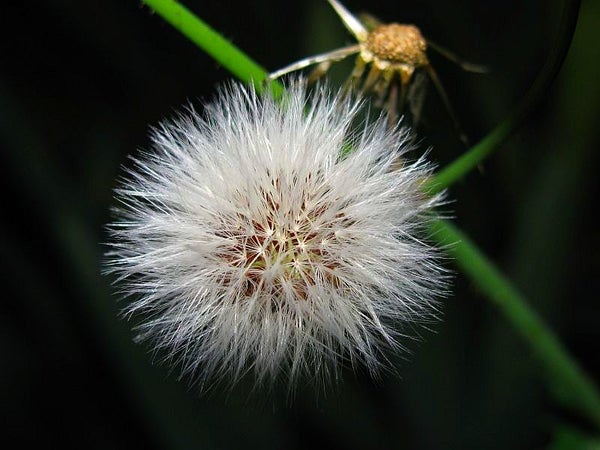This article was published in Scientific American’s former blog network and reflects the views of the author, not necessarily those of Scientific American
This article is a part of the Green Thumbery series, where everyday gardening meets history and science.
Weeds are the bane of gardening. They're greedy and aggressive: they want the cleanest spaces in the ground (i.e., where you've just spent a significant amount of time prepping the dirt), and as many resources and nutrients as they can siphon away from your garden. Left unattended they will choke out the intentionally cultivated plants and spread. They're insidious. But at one point in their history weeds were just, well, wild plants. The designation of plants as weeds represents a pivotal moment in our evolutionary history. In the archaeobotanical record, a large deposit of weeds may indicate instances of cultivation. This is exciting because we didn't fall into domestication overnight but for obvious reasons there are many gaps in understanding how we got there. Finding early weeds can help us learn how we arrived at agriculture's doorstep.
Modern weeds are those plants that appear in field crops, such as lambsquarters, milkweed and purslane. In the archaeological record, however, weeds are those plants that disrupt natural ecosystems and human-altered environments by their settlement in these spaces. We know that humans were modifying their immediate environments well before the Neolithic revolution by clearing land for local cultivation, creating spaces for refuse, and hunting and trapping. These activities created disrupted spaces that were suited to synanthropic plants (weeds). These plants have functional and adaptive traits (e.g., rapid water uptake, high growth rates, high dispersal capabilities) that enabled them to thrive in places that were intentionally altered by human contact. Their high success rates in these circumstances have proven beneficial to scientists: In instances where there is a significant collection of weeds in sites from the Neolithic period and later, we can assume there was systematic cultivation.
But how do we know the botanical remains we've found are weeds? It's a fair question given that plants aren't likely to be well-preserved in the natural record. Approximately 25,000 years ago people settled on the southwestern shores of the Sea of Galilee. Known as Ohalo II, the site flooded and was only discovered in 1989 when the lake water level dropped. The excavations that followed in the early 90s and then in the early 2000s revealed several brush huts and hearths. From the huts and hearths researchers were able to collect an assemblage of roughly 150,000 seeds and fruits, of which 10% of the seeds found belong to 13 families of current weeds. These onetime wild plants had managed to take up residence in cultivated spaces and either evolved into weeds or remained unchanged and began to function as weeds.
Almost all of the proto-weed seeds belong to one of two significant species of current weeds in crop fields; they're either corn cleavers or darnel. The proliferation of the former among cereals, such as barley, wheat, and oat, which make up a third of the collected assemblage, suggests that that these plants may have been gathered in the wild and then grown in trial plots as an initial foray into cultivation.
Ohalo II does not represent "the start" of the agricultural efforts that would would herald widespread domestication efforts. There is no evidence for the continuation of cultivation in the following period. Instead, it implies an awareness of the potential in raising crops. A grinding slab was found on the floor of one of the huts and flint blades were found at the site, which strongly suggests that the people at Ohalo II were harvesting and processing grains for consumption. The weeds at Ohalo II, the proto-weeds, followed human activity much as weeds do today.
Have something to say? Comments have been disabled on Anthropology in Practice, but you can always join the community on Facebook.
--
Referenced:
Snir A, Nadel D, Groman-Yaroslavski I, Melamed Y, Sternberg M, Bar-Yosef O, et al. (2015) The Origin of Cultivation and Proto-Weeds, Long Before Neolithic Farming. PLoS ONE 10(7): e0131422. doi:10.1371/journal.pone.0131422
--
Also in the Green Thumbery series:
--
You might also like:
On supporting science journalism
If you're enjoying this article, consider supporting our award-winning journalism by subscribing. By purchasing a subscription you are helping to ensure the future of impactful stories about the discoveries and ideas shaping our world today.
Image Credit: Daniel Blume
